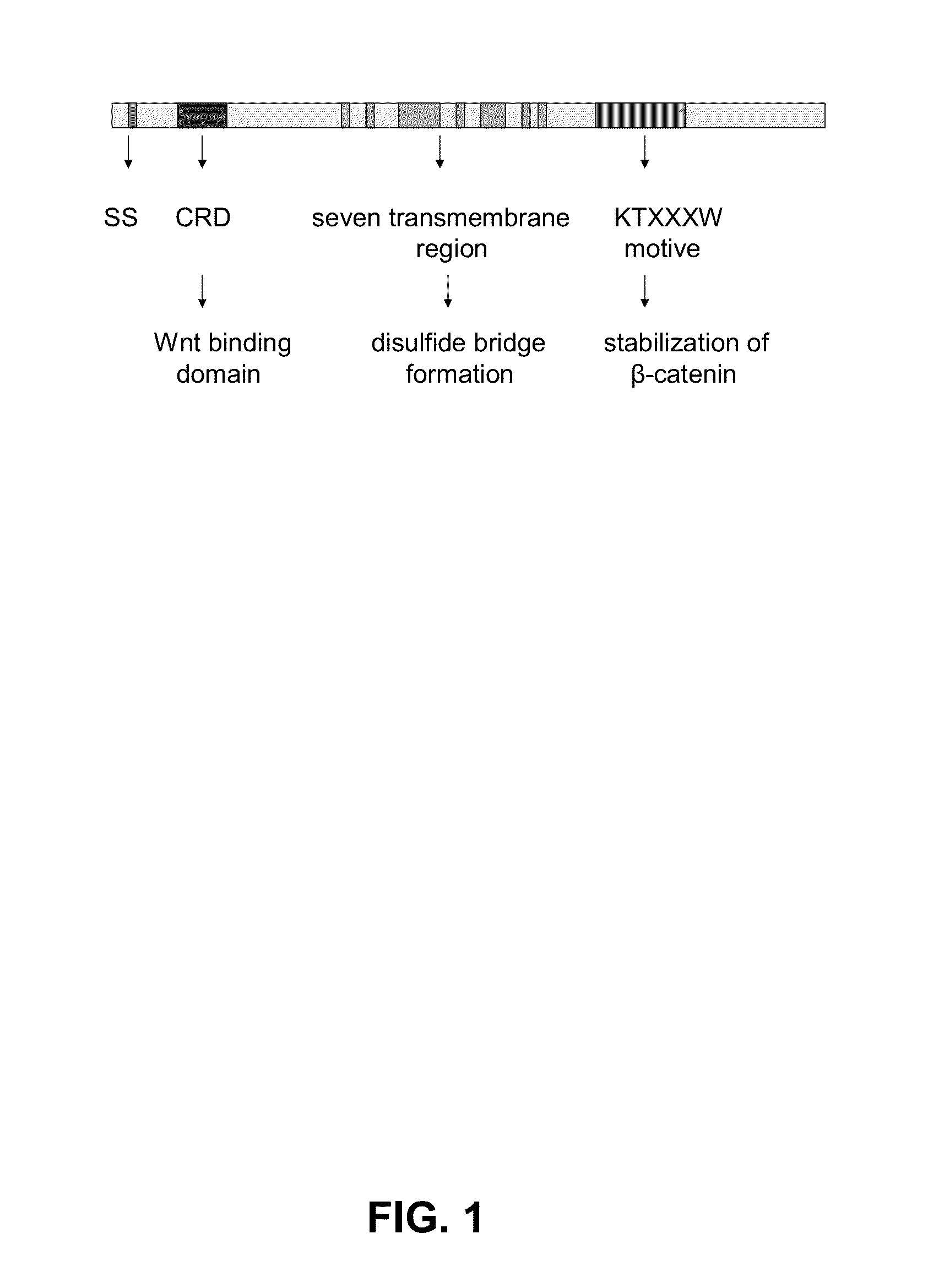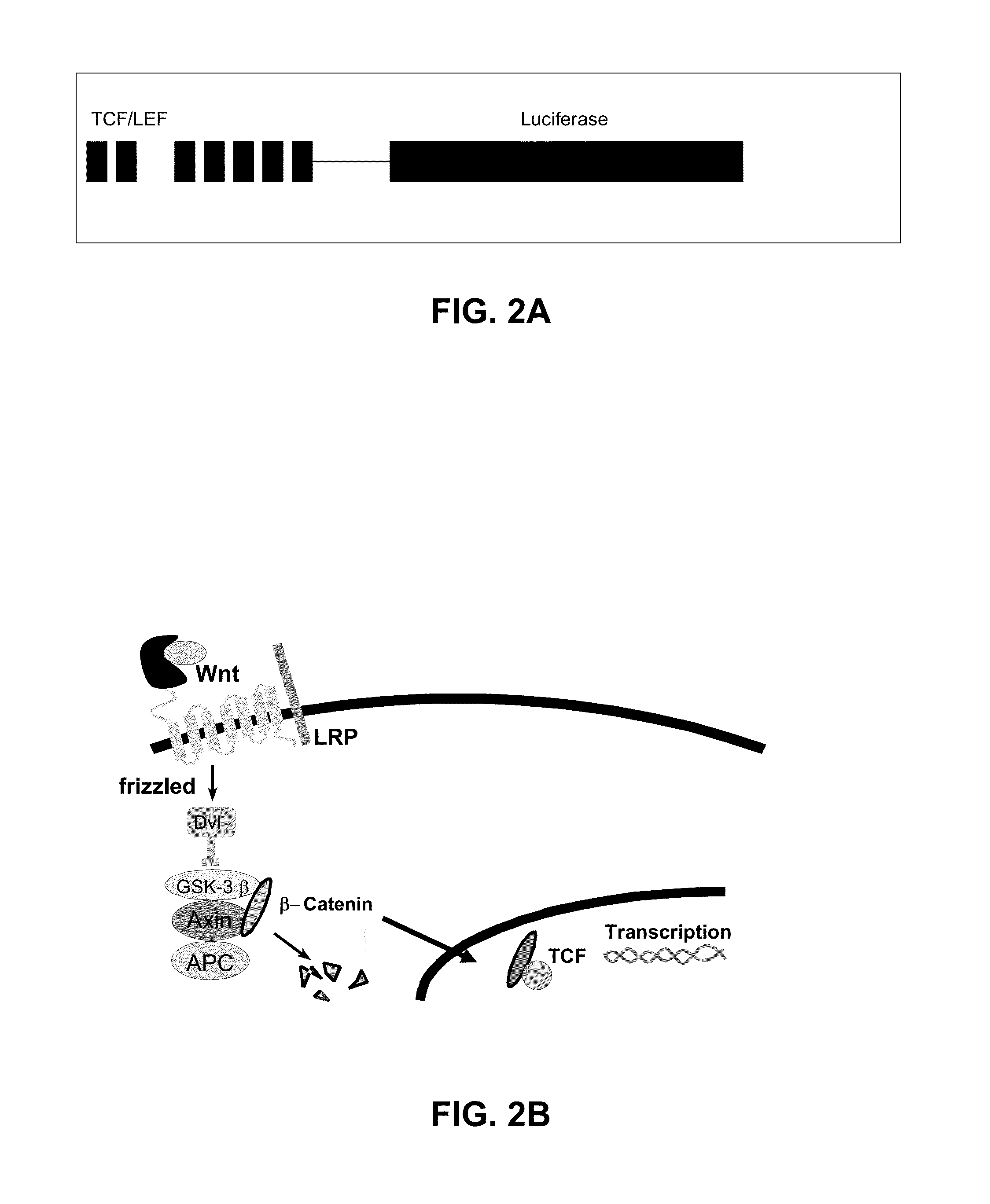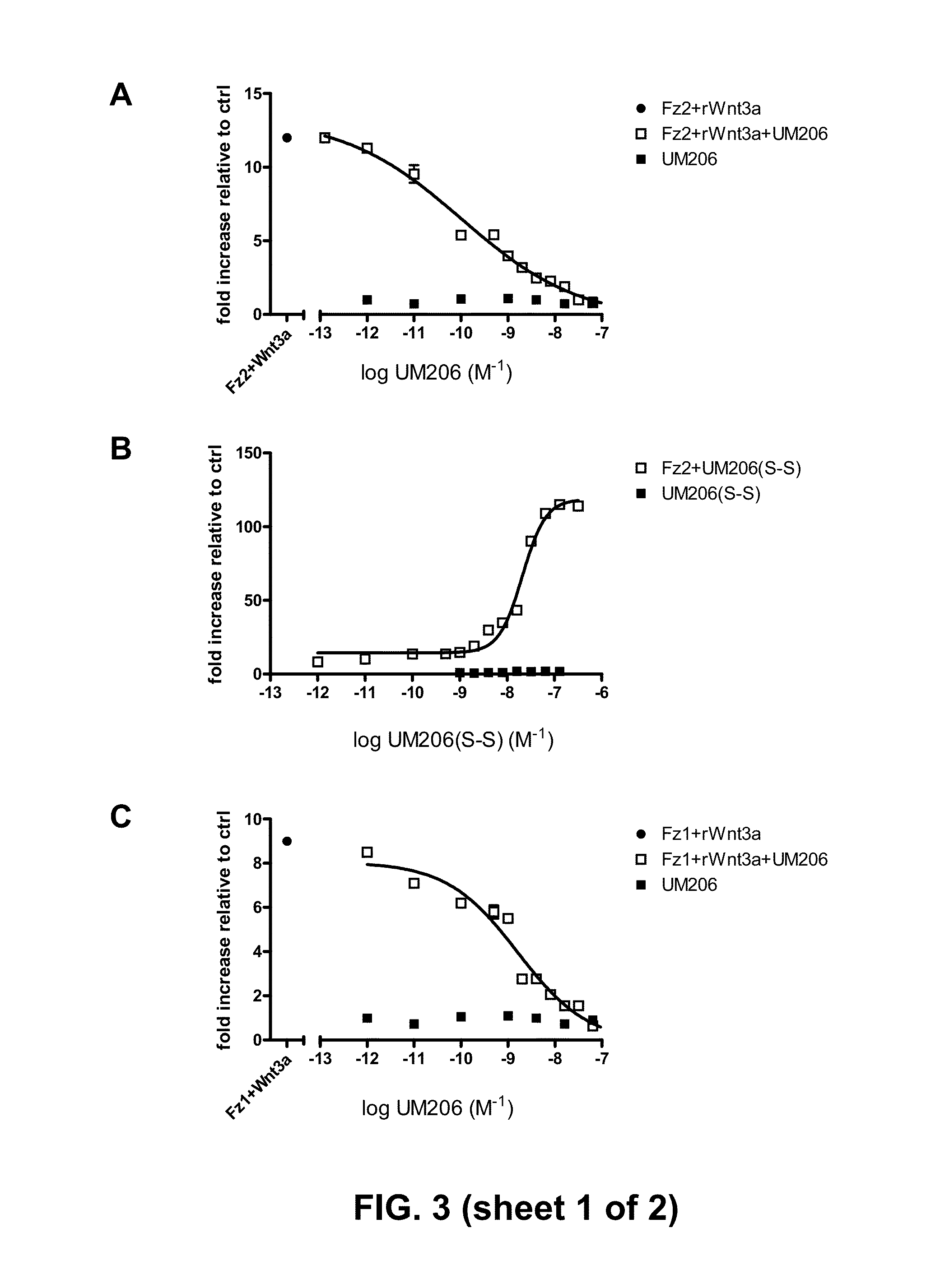Antagonistic peptides for frizzled-1 and frizzled-2
a technology of anti-frizzly receptors and peptides, which is applied in the field of molecular medicine, can solve the problems of different cardiac and vascular abnormalities, organ malfunction, and natural ligands of frizzly receptors that are not suitable for visualization of frizzly receptors, and achieve the effect of improving biostability and improving biological activity
- Summary
- Abstract
- Description
- Claims
- Application Information
AI Technical Summary
Benefits of technology
Problems solved by technology
Method used
Image
Examples
example 1
Activity Assay
[0077]Human embryonic kidney (HEK) cells were used for screening. These cells have a luciferase construct stably transfected into the genome (see FIG. 2A), such that when the frizzled receptor is activated and β-catenin is increased, the luciferase is activated by transcription and light can be measured.
[0078]The peptides were tested by transfecting the frizzled-1 or the frizzled-2 receptor and addition of UM206(S-S) to the cell culture. For testing antagonistic activity, UM206 was added and the natural ligand Wnt3a was added, which is a natural stimulus for the canonical pathway. FIG. 3 shows the results for the antagonist UM206.
example 2
Migration Assay
[0079]For this assay, we used rat cardiac fibroblasts, which were immortalized with telomerase, the C-FIT cell line. This cell line was characterized previously and resembles features of primary cardiac fibroblasts. C-FIT cells were plated, treated when they were 70% confluent and a wound was made with a pipette tip at the moment of 100% confluence. Previous research revealed that overexpression of Fz2 with addition of Wnt3a / Wnt5a delayed the much needed migration of the C-FIT cells into the wound.
[0080]This assay was first tested with the natural ligand Wnt3a, in combination with frizzled-1 and -2 overexpression. These results clearly indicated that Wnt3a in combination with frizzled-1 or -2 inhibited the migration. Next step was to see whether the antagonist could counteract this. (See FIG. 4.)
[0081]UM206 inhibited the delaying effect of the natural ligands and the migration was reset to the migration speed of the control.
example 3
Differentiation Assay
[0082]For this assay, we used the same C-FIT cells as for the migration assay to study a second component of wound healing, namely, differentiation of fibroblasts into myofibroblasts. When wound healing starts, cells called fibroblasts migrate into the scar. These cells have no contractile properties; however, they can differentiate into myofibroblasts, which can actively contract. To study which signals influence the transition from fibroblast into myofibroblasts, we treated the C-FIT cells and harvested them for mRNA isolation. Next, we tested them for the presence of specific markers for myofibroblasts by reverse transcription of the mRNA and subsequent quantitative PCR analysis, which are absent in fibroblasts. One of those markers is α-smooth muscle actin, which makes the cells contract. The results are shown in FIG. 6.
PUM
| Property | Measurement | Unit |
|---|---|---|
| pH | aaaaa | aaaaa |
| pH | aaaaa | aaaaa |
| time of | aaaaa | aaaaa |
Abstract
Description
Claims
Application Information
 Login to View More
Login to View More - R&D
- Intellectual Property
- Life Sciences
- Materials
- Tech Scout
- Unparalleled Data Quality
- Higher Quality Content
- 60% Fewer Hallucinations
Browse by: Latest US Patents, China's latest patents, Technical Efficacy Thesaurus, Application Domain, Technology Topic, Popular Technical Reports.
© 2025 PatSnap. All rights reserved.Legal|Privacy policy|Modern Slavery Act Transparency Statement|Sitemap|About US| Contact US: help@patsnap.com



